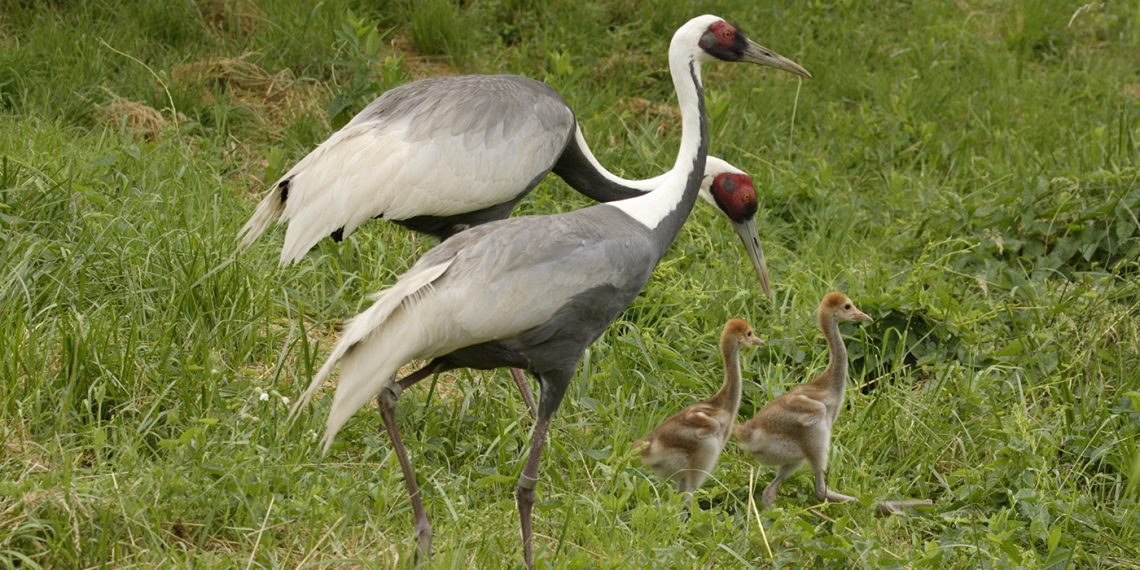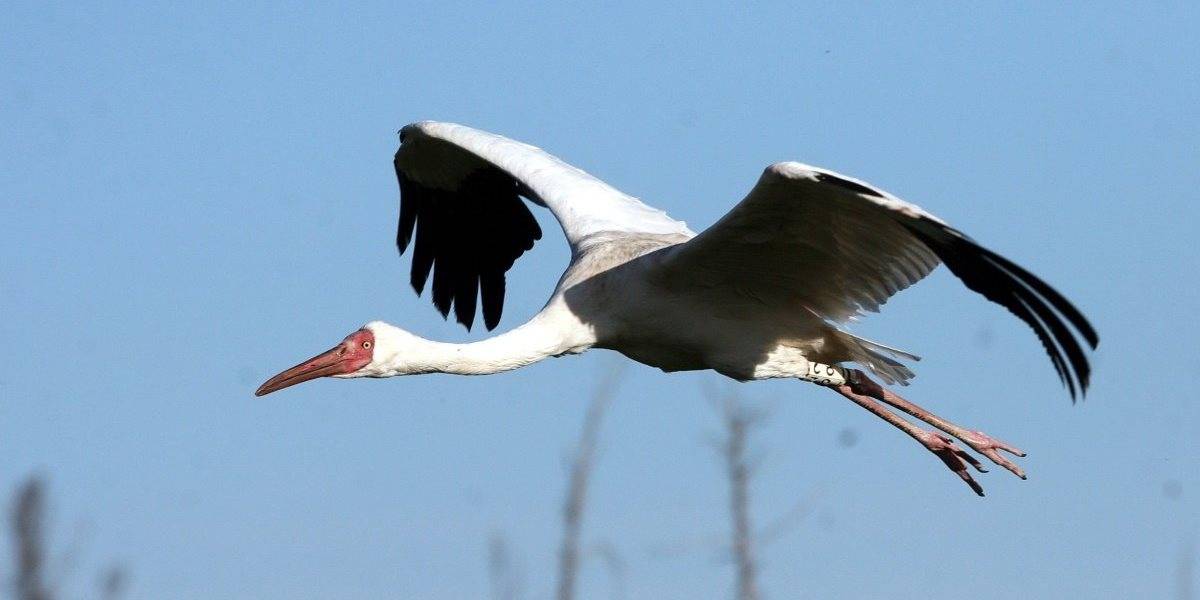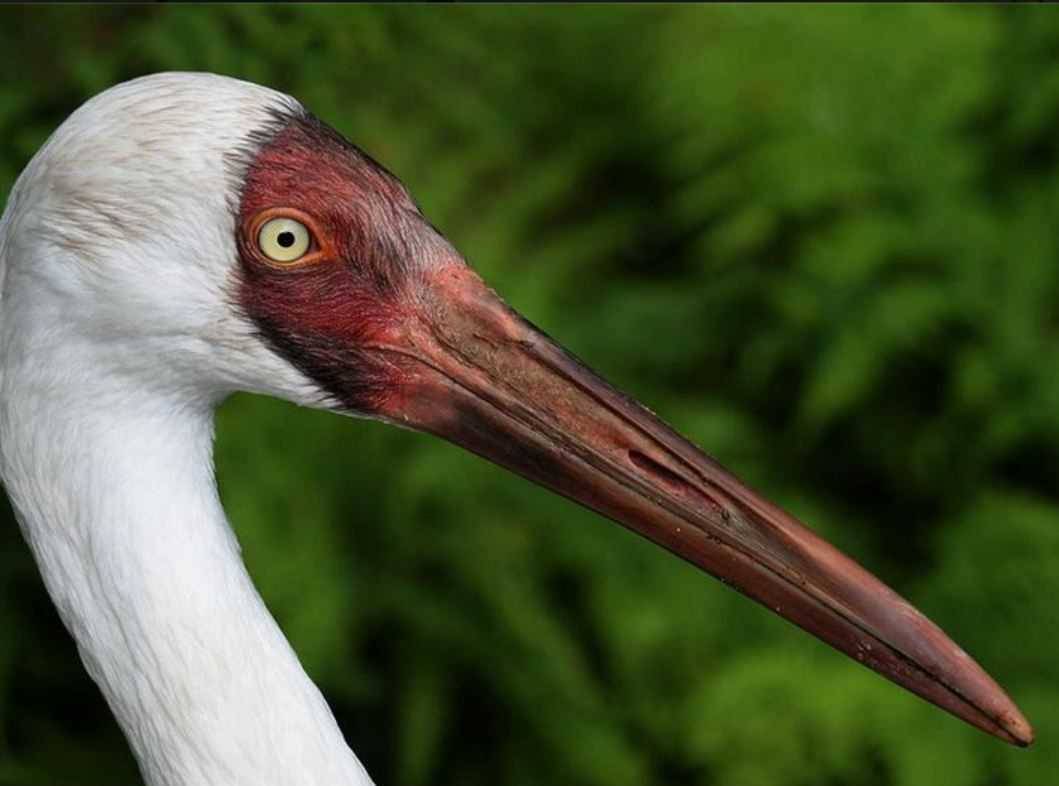
Habitat of the White Crane
Many species of animals and plants have already been placed in the Red Book. This means that certain species are endangered. The Siberian Cranes, a population of cranes that can only be found in Russia, have now come close to such a dangerous edge.
Do you know who exactly we mean by the word “sterkh”? The Siberian Crane is one of the largest representatives of crane species. But so far not much is known about this species.
Let’s take a closer look at it. First of all, attention is drawn to the appearance of the bird. The Siberian Crane is larger than other cranes, in some habitats it reaches a height of 1,5 meters, and its weight is within five to eight kg. The wingspan is 200-230 centimeters, depending on which population. Long-distance flights are not typical for this species; they prefer not to leave their territory, where they have a nest and a family.
You will recognize this bird by its long red beak, with sharp notches at the tip, they help it to feed. Also, the Siberian Crane is distinguished by the presence of a bright red shade of the skin around the eyes and near the beak, but there are no feathers. That is why the crane is visible from afar. Speaking of color and other features, I would like to add long pink legs, a double row of feathers on the body, and dark orange spots that can be on the body and neck of cranes of this species to the list.
In adult Siberian Cranes, the eyes are often yellow, while the chicks are born with blue eyes, which change color only after half a year. The average lifespan of this species is twenty years, and no subspecies are created. The head of the Siberian Cranes is distinguished by territorial constancy and lives only on the territory of Russia, never leaving it.

Nowadays, alas, the West Siberian cranes are on the verge of extinction, there are only 20 of them. This is the responsibility of the International Cranes Conservation Fund, which appeared a long time ago – in 1973, and is called upon to monitor this problem.
As we already wrote here, the white crane equips its nest only within Russia, but as soon as it gets colder and frosts begin, they flock in search of warmer climes. Most often, Siberian Cranes winter near the shores of the Caspian Sea, or in the Indian swamps, and sometimes in the north in Iran. Cranes are afraid of people, and this is justified, since poachers are found at every turn.
But as soon as spring comes, and with it warming, the Siberian Cranes return to their habitable places. The exact regions of their habitat are the Komi Republic, the northeast of Yakutia and Arkhangelsk. Curiously, they are difficult to see in other areas.
The most favorite habitats for Siberian Cranes are swamps and swampy areas, in particular, tundra and thickets. You are probably interested in what white cranes use in writing. Their food is varied, and consists of both vegetation and meat: in addition to reeds, aquatic vegetation and some types of berries, they consume fish, rodents and beetles with no less pleasure. But in winter, being away from home, they eat only plants.
During migration, these majestic creatures never touch the gardens and fields of people, because the Yakuts have nothing against the fact that cranes choose their territories for wintering.

As it became known, because of the threat of extinction of the population in Yakutia, a national reserve was founded. Many Siberian Cranes found their shelter there, which are now safely hidden from poachers and natural disasters.
Many people know that there are eastern and western Siberian Cranes, the difference between them is only in the location of their nests. It is very upsetting that both of them are becoming less and less: there are no more than 3000 of them left. Why is the population of white cranes declining so rapidly? Oddly enough, it is not poaching that is the main reason, but natural conditions and bad weather, cold and frost.
The regions where cranes live are changing, which is the reason for the need for reserves and the emergence of comfortable and suitable enclosures for the normal habitat of these birds. For the winter, many Siberian Cranes fly to China, where, due to technical and scientific development, places suitable for bird life disappear very quickly. As for the territories of Pakistan, Russia and Afghanistan, poachers threaten the cranes there.
The task of preserving the population of white cranes is a priority today. This was decided during the adoption of the Convention for the Protection of Animals that Migrate to Other Regions. Many scientists from the countries where the Siberian Cranes live meet every two years for a conference and discuss new methods to conserve and protect endangered birds.
Considering all these sad facts, the Sterkh project was created and is operating, and its main task is to preserve and multiply this rare, beautiful species of cranes, normalizing their ability to reproduce their own kind and increase the number of individuals.
Finally, to everything that we know, I would also like to note that the realities are as follows: there is a high probability that the Siberian Cranes will soon disappear for good. Therefore, this situation, by right, is a global problem at the world level. Cranes are protected in every possible way and they try to keep their numbers, gradually increasing it.





